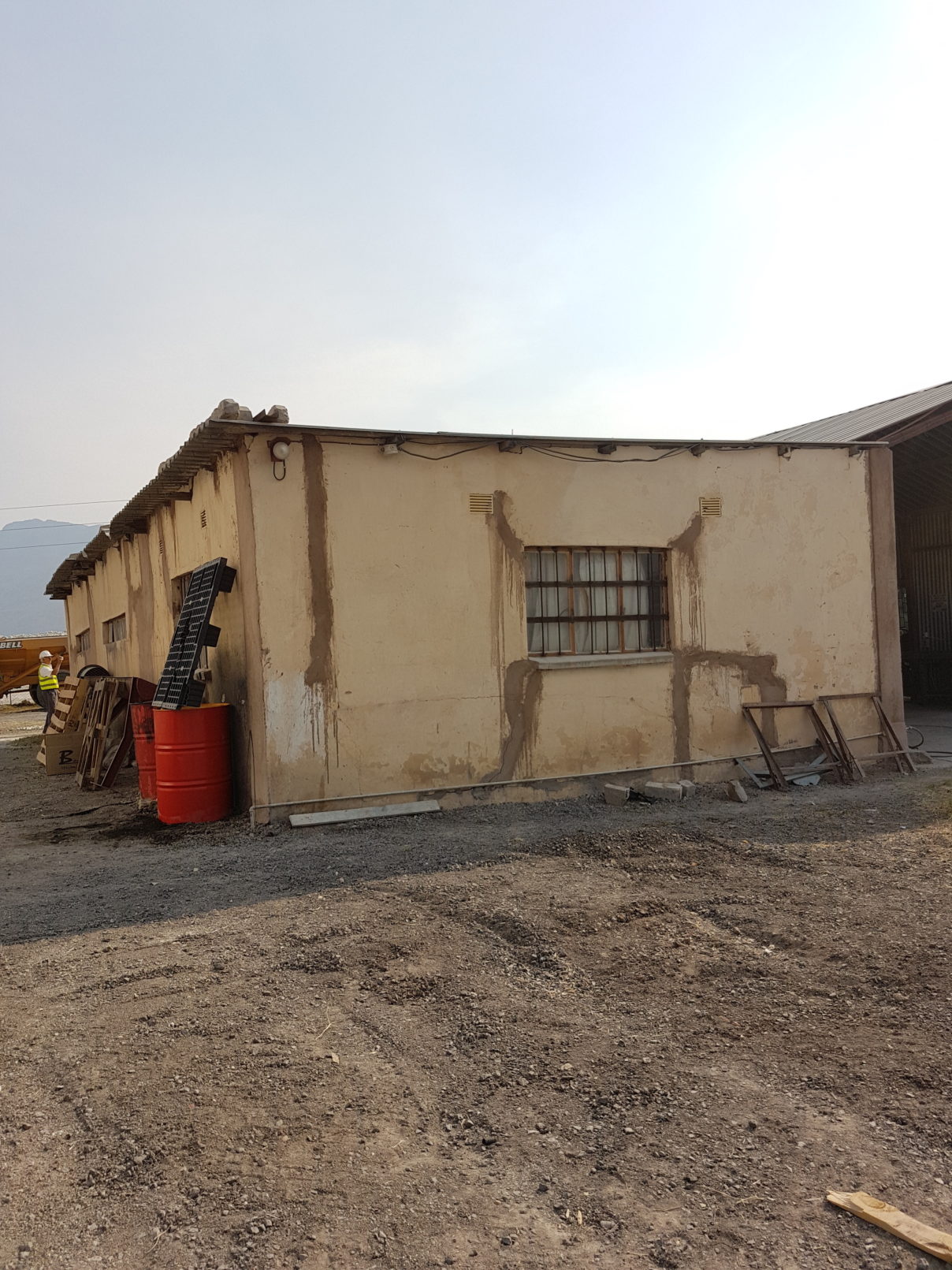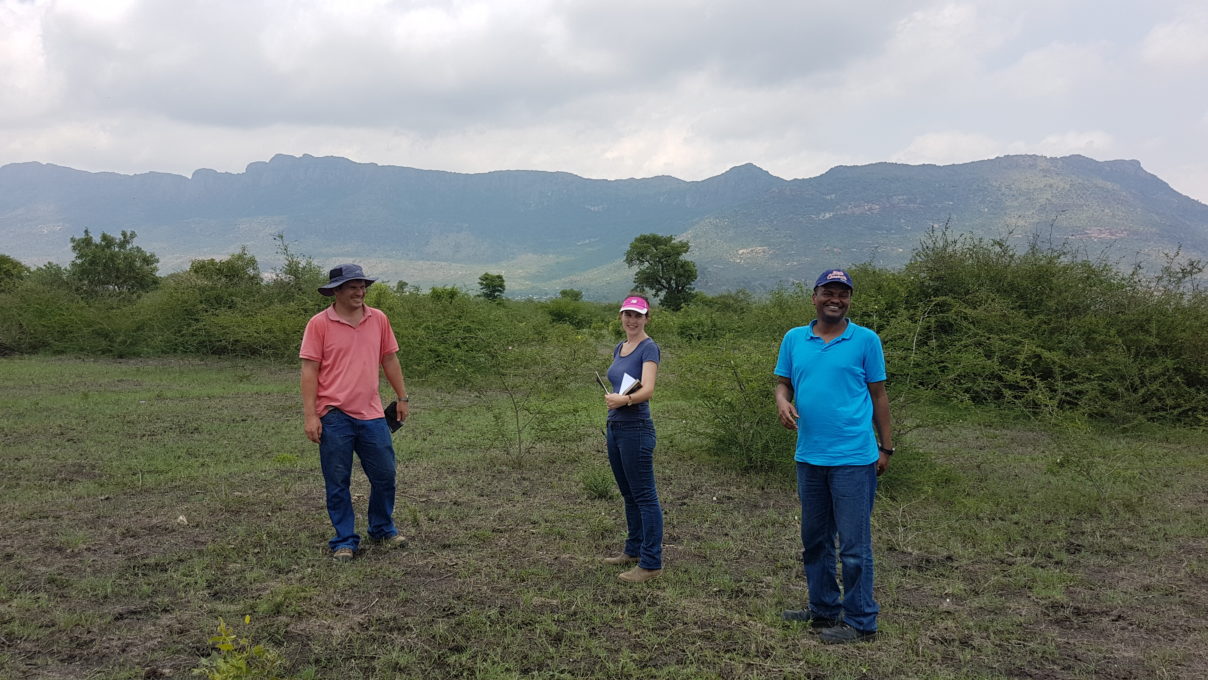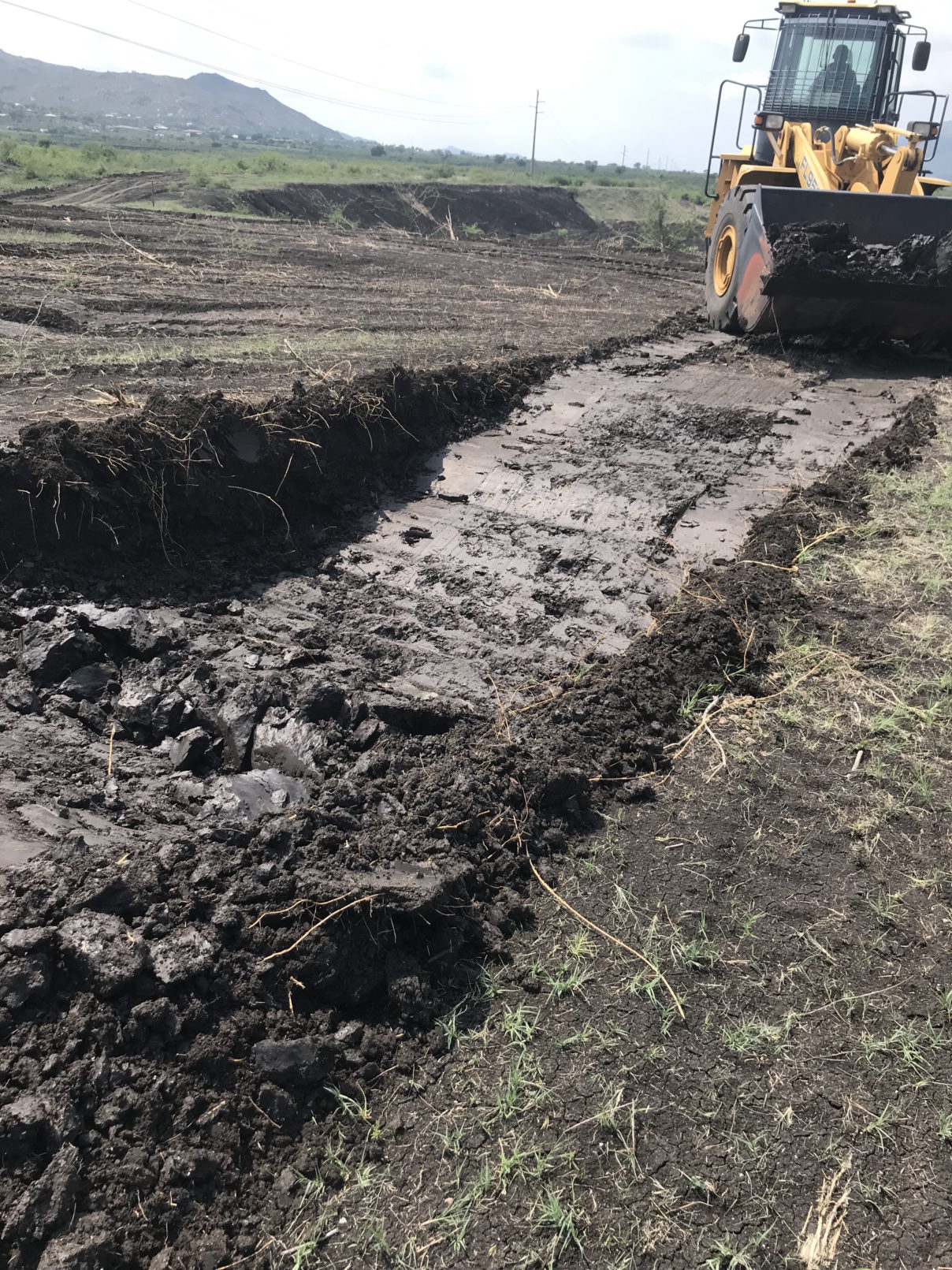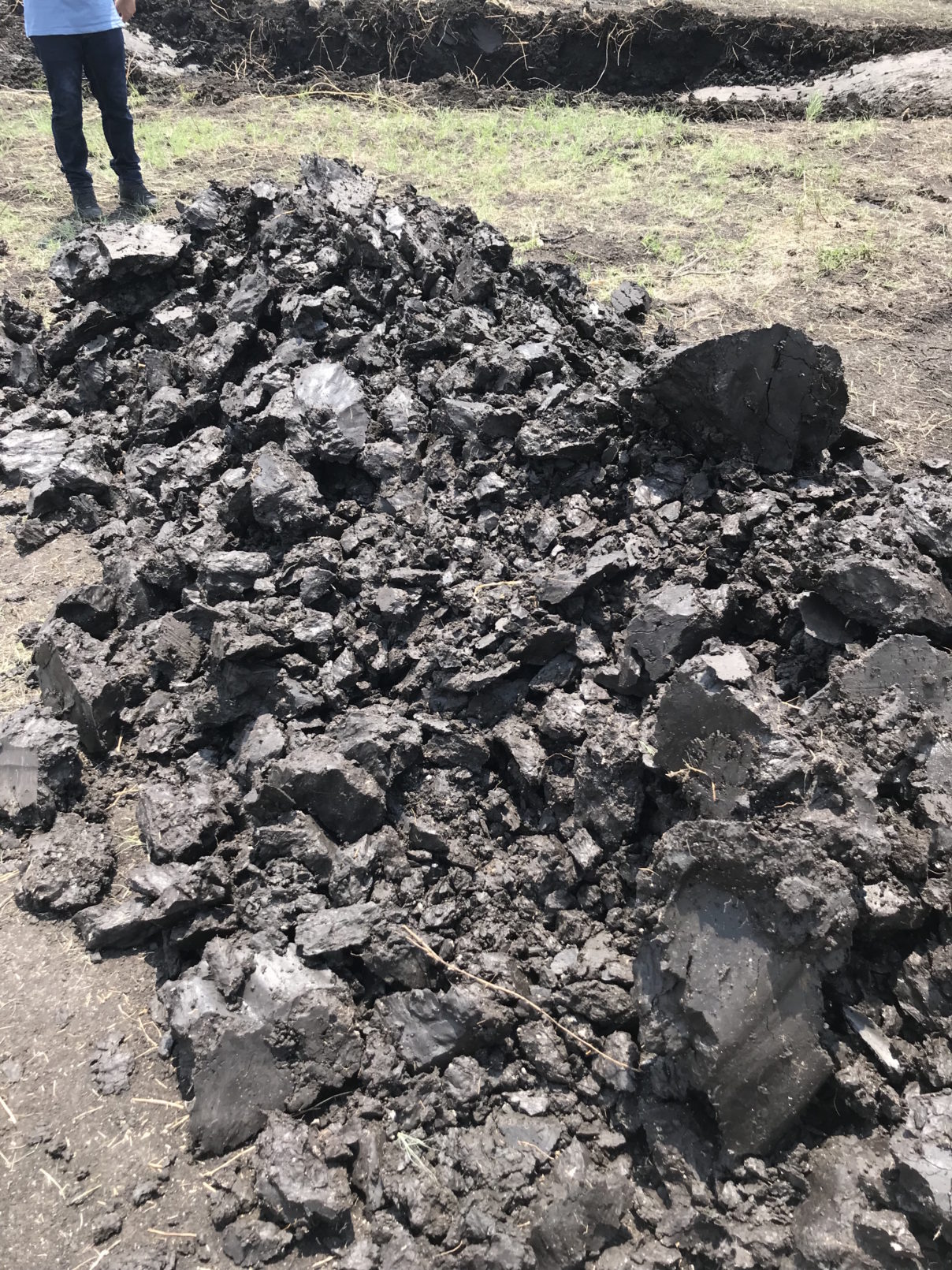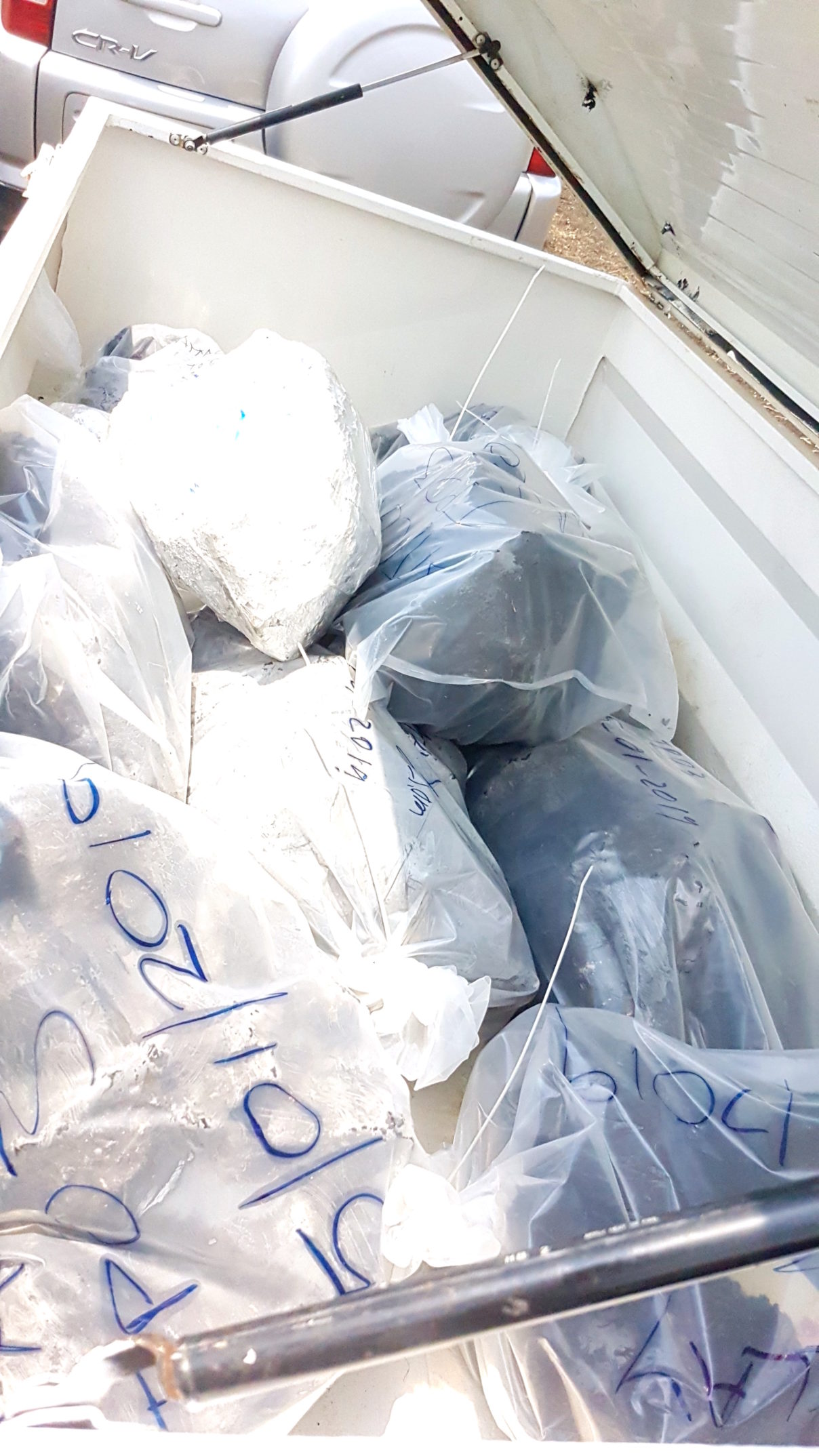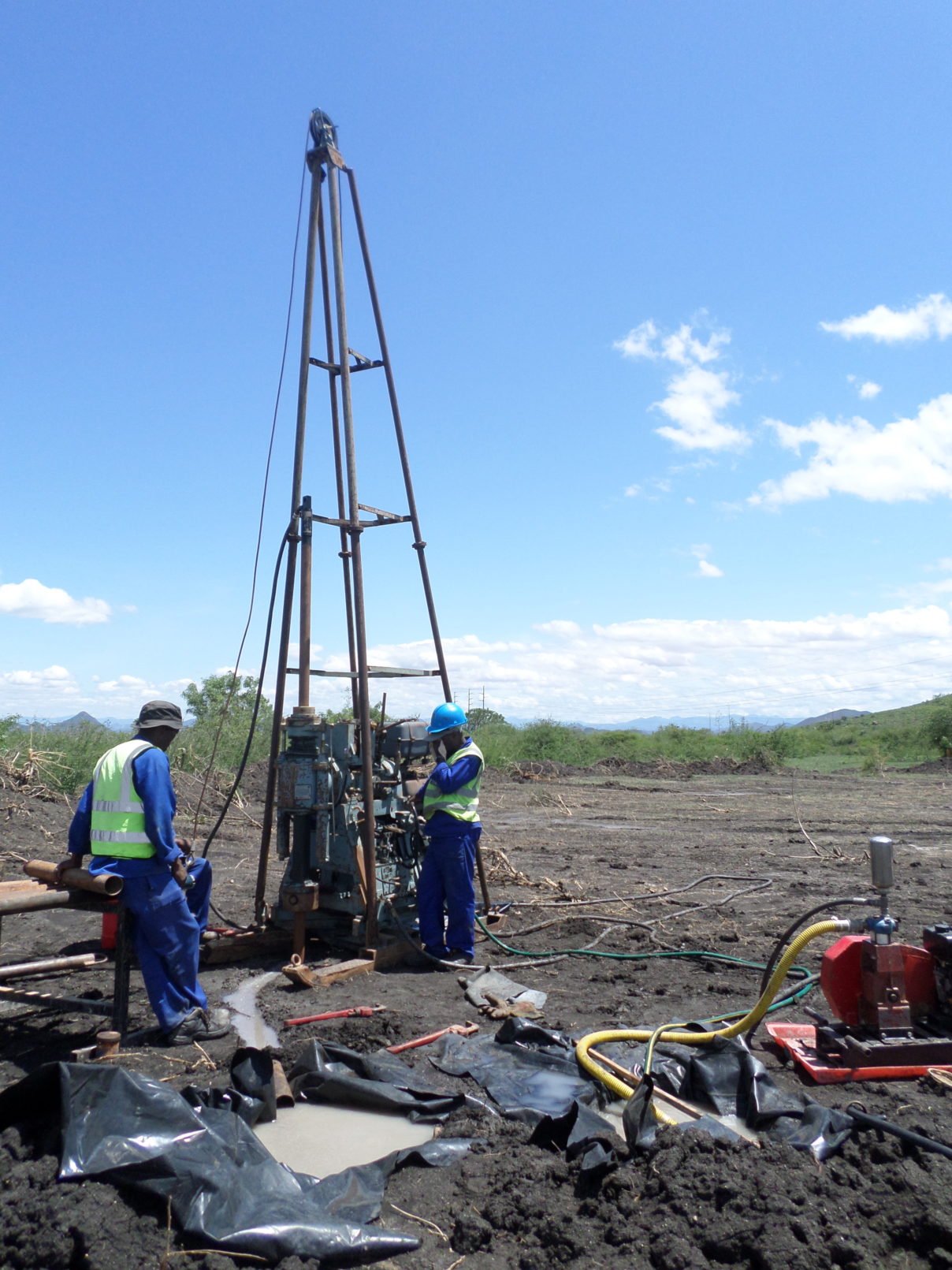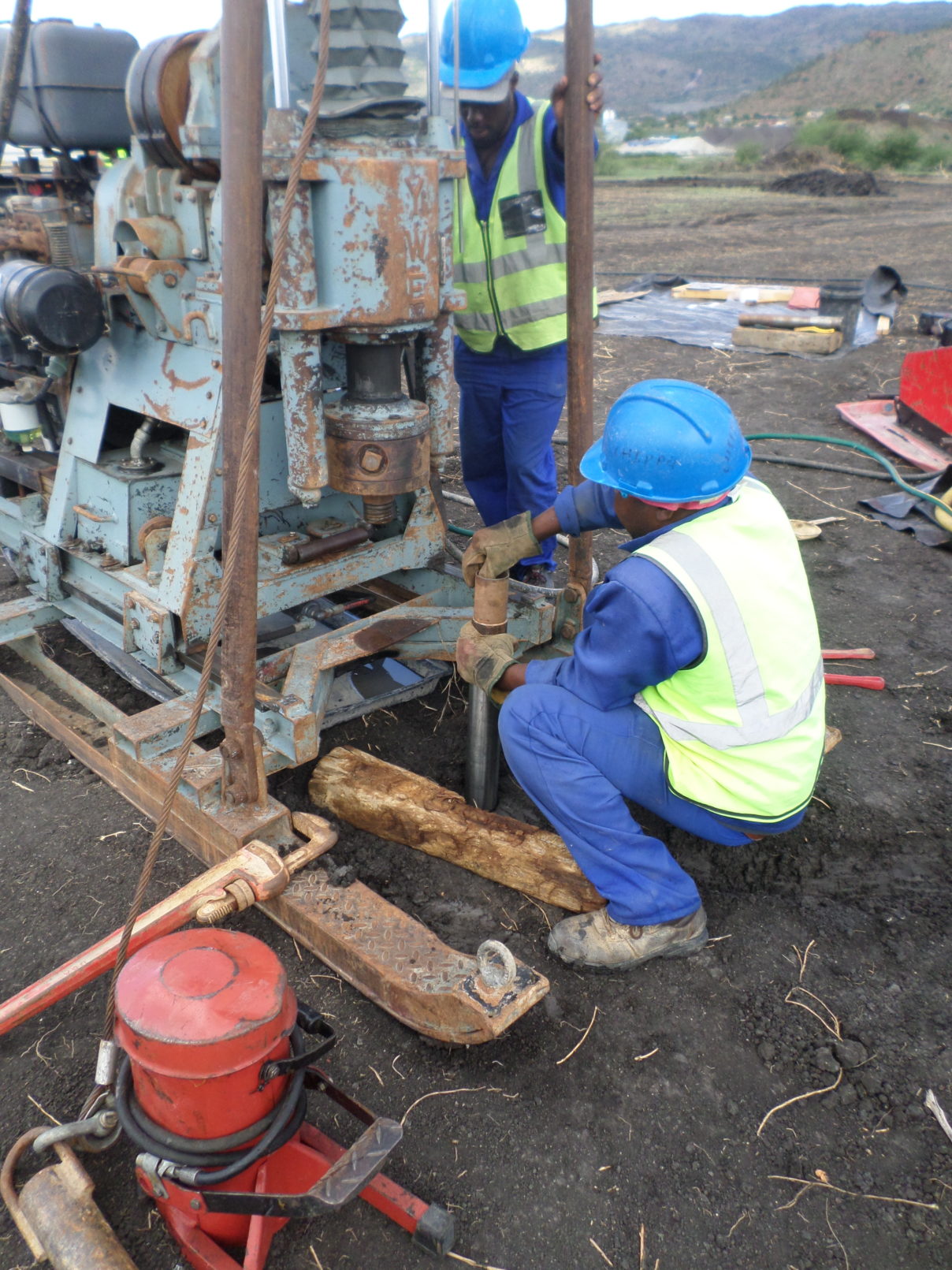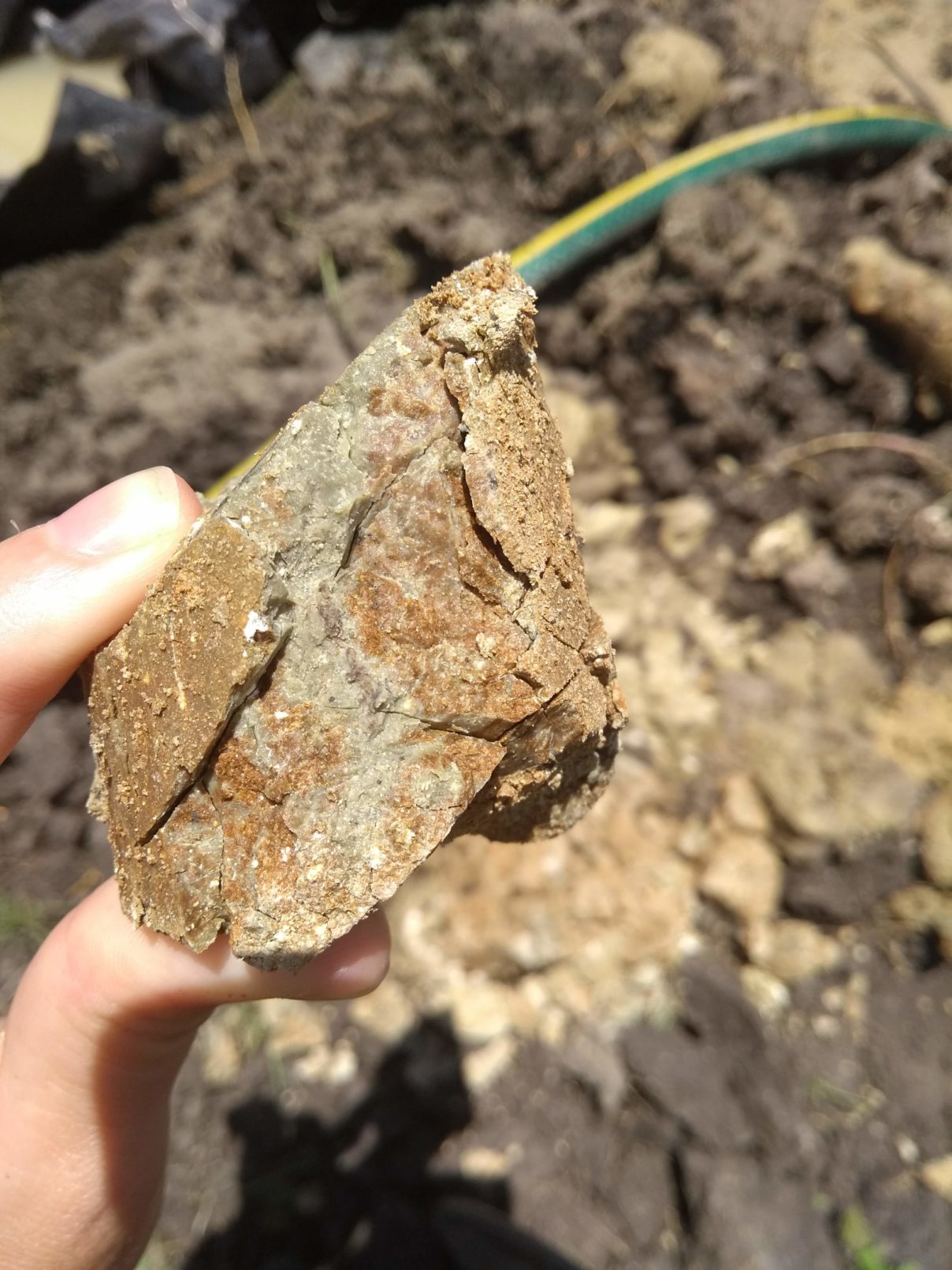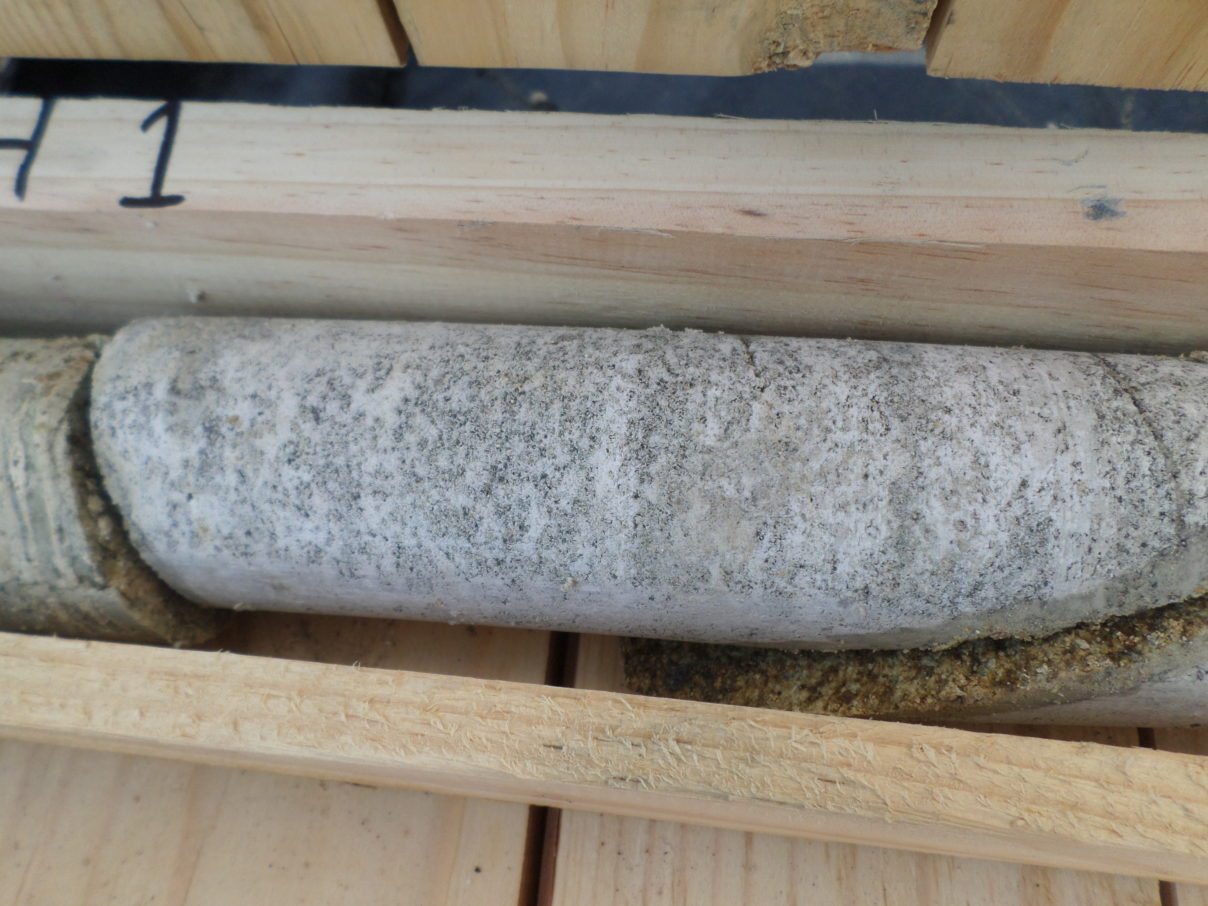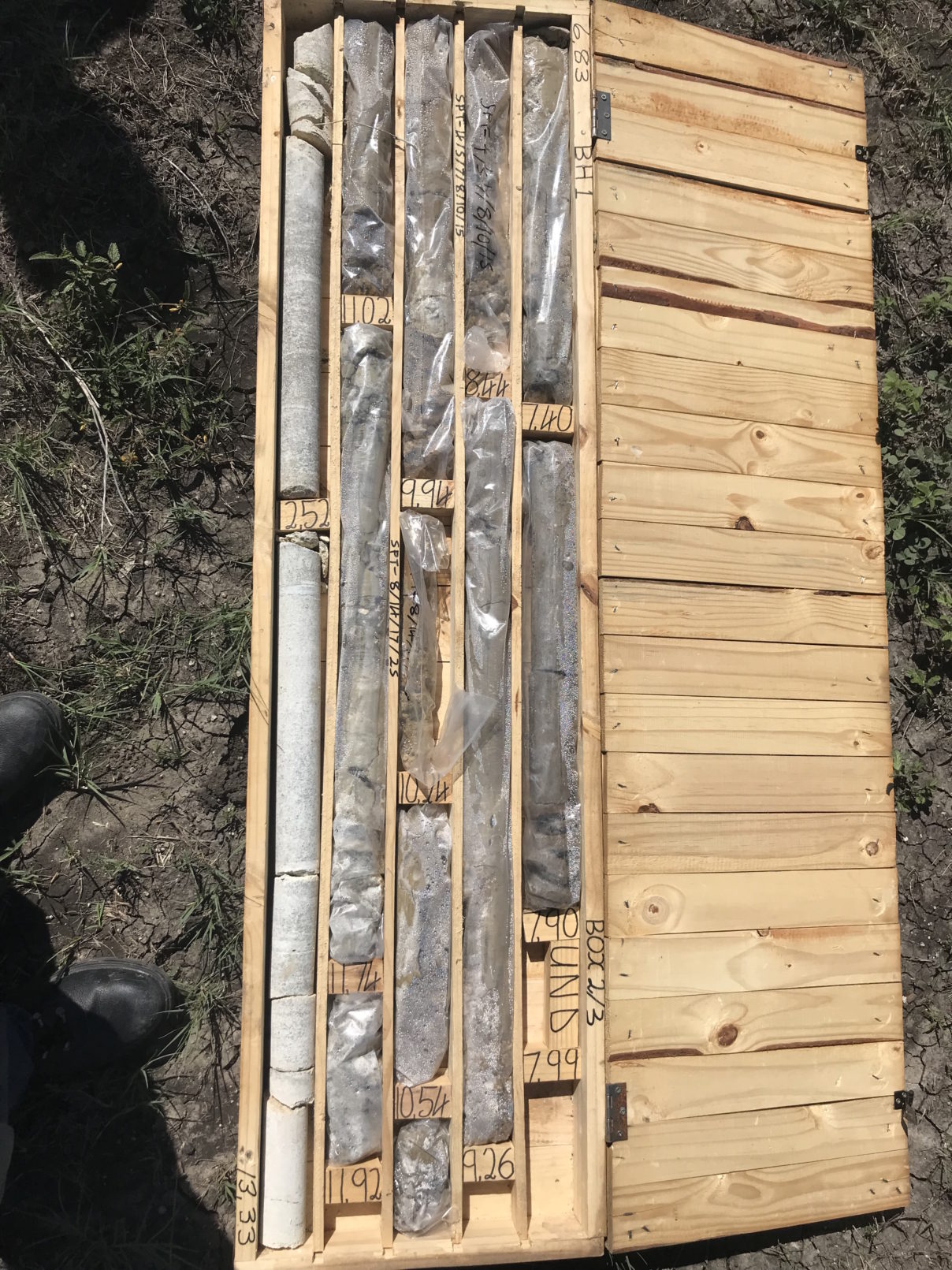WindAfrica test site drilling update
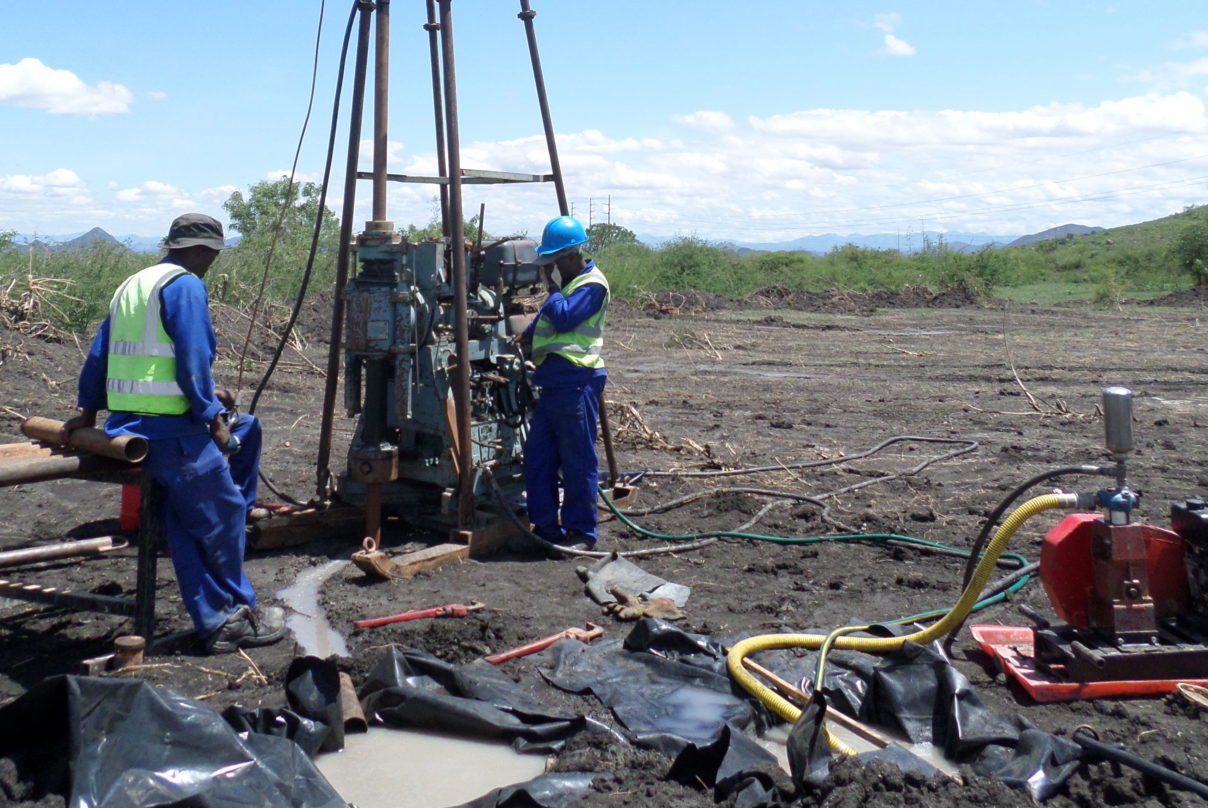
First Driling on site…
A geotechnical drilling investigation was conducted on the proposed WindAfrica field testing site in South Africa in early January. The site is located in the north east of the country, in an area known to give problems to structures due to the expansive clays. The aim of the investigation was to determine the depth of the expansive material and the depth to rock on site to ensure the suitability of the site for the proposed testing (WP1).
Two boreholes were drilled to investigate the profile in the two proposed test areas. Undisturbed samples were taken from the boreholes for the laboratory testing (WP3), and SPT results were used to characterise the soil profile. In addition, a shallow pit was dug to take bulk soil samples for the centrifuge testing (WP2).
The visit was a success, with rock encountered at an approximate depth of 12 m in both boreholes. Slickensided material, evidence of the expansive nature of the soil, was encountered throughout the soil profile until the transition to the rock. Planning is now underway for the installation of the piles for the full field testing program.
A selection of photos from this first investigation can be found below:
